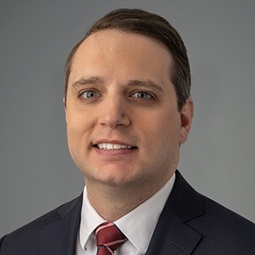Contributed by Doron P. Kenter.
“Round and around and around and around we go // Oh now tell me, now tell me, now tell me now you know // … It takes me all the way // I want [to extend the automatic] stay” – Rihanna (as modified)
The automatic stay is one of the sacrosanct protections inherent in bankruptcy. A number of recent decisions (and pending litigations) have focused on the degree to which that automatic stay can and should be extended to nondebtors – particularly those who are co-defendants with debtors. As a general principle, the automatic stay is only automatic as applied to debtors. “As to non-debtors, it is relief that is available, but it is not automatic.” Notwithstanding that principle, it is difficult to judge the practical effects of a bankruptcy case upon litigation against debtors and nondebtors alike, and how the litigation can proceed against the nondebtors if the debtor is not involved. What are the collateral effects on the debtor if litigation proceeds against the nondebtors? Is the debtor effectively obligated to participate, even if the claims against him are “technically” stayed? Should the same issues be litigated twice?
The United States District Court for the Eastern District of Louisiana recently faced those very questions. Interestingly, the district court took it upon itself to determine the nature and extent of the automatic stay as it pertained to the debtor’s nondebtor co-defendants, effectively extending the automatic stay to those co-defendants. But as we shall see, such a decision by the district court is not always consistent with the analysis that is ordinarily undertaken by bankruptcy courts deciding whether to extend the automatic stay to nondebtors.
Abrams v. Integrated Pro Services, LLC: The Facts
Gary Hess, Ryan Hess, and William S. Abrams co-owned Integrated Pro Services (“IPS”). In 2007, Abrams left IPS and, shortly thereafter, filed a complaint against the Hesses and IPS, alleging that he had not been compensated by IPS, and that the defendants had breached their fiduciary duties to Abrams, along with their contractual obligations to him. After initial pleadings, the district court administratively closed the case on January 29, 2010, subject to the outcome of a report from a court-appointed expert regarding the valuation of IPS’s business and of Abrams’s claim. Four years later, the court-appointed expert submitted his valuation report, and the court ordered the parties to submit a status report regarding the pending litigation.
The day before the parties were to submit the status report in the pending litigation, Ryan Hess was named a debtor in an involuntary bankruptcy case. The district court then ordered briefing regarding whether any claims should be severed from the litigation pursuant to Rule 42(b) of the Federal Rules of Civil Procedure due to the fact that the claims against Ryan Hess were stayed by operation of section 362 of the Bankruptcy Code. Rule 42(b) provides that:
For convenience, to avoid prejudice, or to expedite and economize, the court may order a separate trial of one or more separate issues, claims, crossclaims, counterclaims, or third-party claims. When ordering a separate trial, the court must preserve any federal right to a jury trial.
In response to the district court’s request, the plaintiffs (Abrams and Abrams Construction Group) moved to sever the claims against Ryan Hess from the claims against his nondebtor co-defendants. Because the automatic stay barred the plaintiffs’ claims against Ryan Hess from proceeding, severance of those claims would allow the litigation to proceed against the nondebtors without violating the stay. The plaintiffs argued that any additional delay in asserting the claims against the nondebtors would cause “significant undue prejudice” in light of the time and resources they had expended thus far in connection with the long-lasting litigation. In the alternative, the plaintiffs asked the district court for an opportunity to seek relief from the automatic stay in Ryan Hess’s bankruptcy case, so that their claims could proceed against all of the defendants collectively.
The defendants then filed a “Motion to Decline Severance,” which the district court acknowledged was “functionally-speaking . . . a motion seeking extension of the automatic bankruptcy stay to all co-defendants.” They argued that the claims against Ryan Hess were “inextricably interwoven” with the claims against the other co-defendants and that severance of the claims against Ryan Hess “would result in prejudice to the parties, judicial
inefficiency and manifest injustice.” The defendants therefore asked the district court to “require all litigants . . . to prosecute and defend their claims collectively,” effectively extending the automatic stay to Ryan Hess’s co-defendants.
Severance of Claims Against Nondebtors
In weighing the parties’ motions, the district court considered the prejudice to the respective parties, as well as the efficiencies, convenience, and fairness of the proposed paths forward. As expected, the Fifth Circuit Court of Appeals places the burden of proof on the party seeking severance. As the district court noted, the considerations to be taken into account by a court include:
- whether the claims arise out of the same transaction or occurrence;
- whether the posture of discovery as to the respective claims suggest they should not be tried jointly;
- whether the claims present common questions of fact or law;
- whether the claims will require testimony of different witnesses and documentary proof; and
- the prejudice to either party in the event separate trials are ordered
The district court concluded that the first four factors all weighed against severance because the claims against all of the defendants arose out of a single occurrence, involved the same questions of law and fact; and would require identical discovery and evidence at trial. Moreover, if the claims against Ryan Hess were severed, the same issues could end up being put before two different jury panels, resulting in inconsistent verdicts. The district court further noted its concern that Ryan Hess could be collaterally estopped from litigating certain issues in his defense, if the same issues had been resolved in the proceeding against his co-defendants before the claims proceed against him individually. The district court noted that it was “undoubtedly regrettable” that the plaintiffs had been forced to wait so long to have their day in court, but any prejudice to the plaintiffs was outweighed by the “undue prejudice” to the defendants, as well as the inefficiencies and inconveniences that would result from severing the claims.
Extending the Automatic Stay
The district court could have simply stopped there, noting that, as a practical matter, the litigation could not continue against all parties so long as it was stayed against Ryan Hess. The district court, however, went on to specifically grant the defendants’ motion to decline severance – concluding that the action should affirmatively be stayed against Ryan Hess’s nondebtor co-defendants.
In extending the stay, the district court first acknowledged that the automatic stay “ordinarily” does not protect nondebtors. It further noted that under the circumstances, the nondebtor defendants did not meet the Fifth Circuit’s standard for extending the automatic stay to proceedings against nondebtor co-defendants. The district court concluded that there was not “such an identity between the debtor and the third-party defendant that the debtor may be said to be the real party defendant and that a judgment against the third-party defendant will in effect be a judgment or finding against the debtor.” Indeed, the district court acknowledged that the Fifth Circuit noted that “the presence of identical allegations against the debtor and non-debtor defendants” is not, by itself, sufficient to warrant extension of the stay. But notwithstanding the defendants’ failure to meet that general standard, the district court pointed to the Fifth Circuit’s additional statement that “courts may also exercise their discretion to stay a proceeding against non-bankrupt co-defendants ‘in the interests of justice and in control of their dockets.’” Then, citing to a Texas district court decision, the Louisiana district court concluded that the automatic stay may also be extended when claims against co-defendants are “inextricably interwoven” with claims against the debtor. Because the claims against all of the defendants were “inextricably interwoven,” and the matter could not fairly proceed against certain defendants and not others, the district court granted the defendants’ motion to decline to sever the claims against the debtor from the claims against the nondebtors, effectively extending the automatic stay to Ryan Hess’s nondebtor co-defendants.
Note, though, that the plaintiffs were not left without a remedy. The court stated that even though all claims against the nondebtor defendants were stayed, such stay would remain in effect only unless and until the bankruptcy court modified the automatic stay to allow the litigation to proceed against Ryan Hess. The plaintiffs were free to seek the appropriate relief in the bankruptcy court.
“So What?”
After sifting through the procedural issues in the Abrams case, it becomes clear that the motion to sever (which the district court had invited) effectively constituted competing requests to either (i) extend the stay to the nondebtor defendants or (ii) allow the litigation to proceed against the nondebtors, while leaving the claims against the debtor for another day. The district court recognized that it was both unworkable and unfair to allow the litigation to proceed against the nondebtor defendants. Indeed, the motions were not particularly different from motions to extend the stay to the nondebtors.
The difference, though nuanced, is important. If the defendants had brought a motion in the bankruptcy court to extend Ryan Hess’s automatic stay to his co-defendants, the burden would have been on the defendants to demonstrate that the stay should be extended. Here, however, it was the plaintiffs that bore the burden of demonstrating why the claims should be severed – i.e., why the stay should not be extended to the nondebtor defendants – precisely the reverse of the burden that would otherwise be imposed with respect to the applicability of the automatic stay vis-à-vis nondebtor defendants. And even though the plaintiffs remained entitled to move the bankruptcy court for relief from the automatic stay to permit the litigation to proceed, the burden would continue to be on the plaintiffs to demonstrate why the stay should be lifted and the litigation should be able to proceed against all defendants. In contrast to the widely-held position that the automatic stay presumptively does not apply to nondebtors, the burden throughout the process in Abrams was on the plaintiffs to demonstrate that they stay should not be extended.
Under the circumstances, the result may have been the same, regardless of the shifting burdens or the forums in which relief had been sought. And one cannot ignore the fact that the district court specifically invited the parties to brief the severance issue (rather than directing the parties to seek initial relief in the bankruptcy court). But litigants should continue to exercise extreme caution in the form and manner of the relief being sought, and in choosing the forum for seeking such relief, as those decisions may have a significant effect on the parties’ burdens and procedural hurdles – and even, perhaps, on the outcome.












